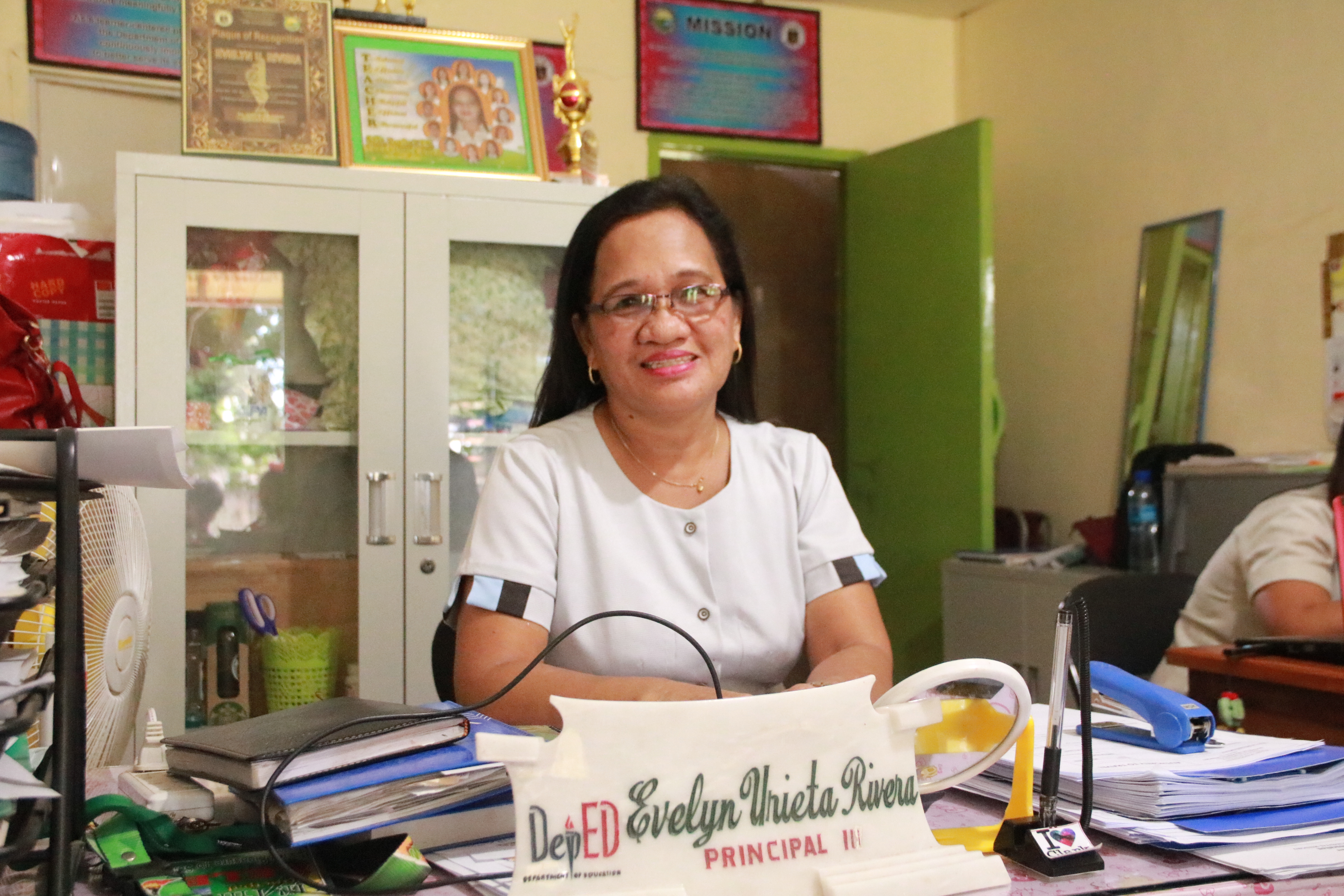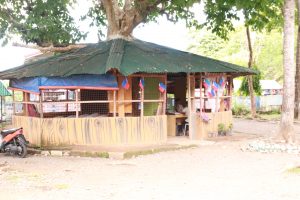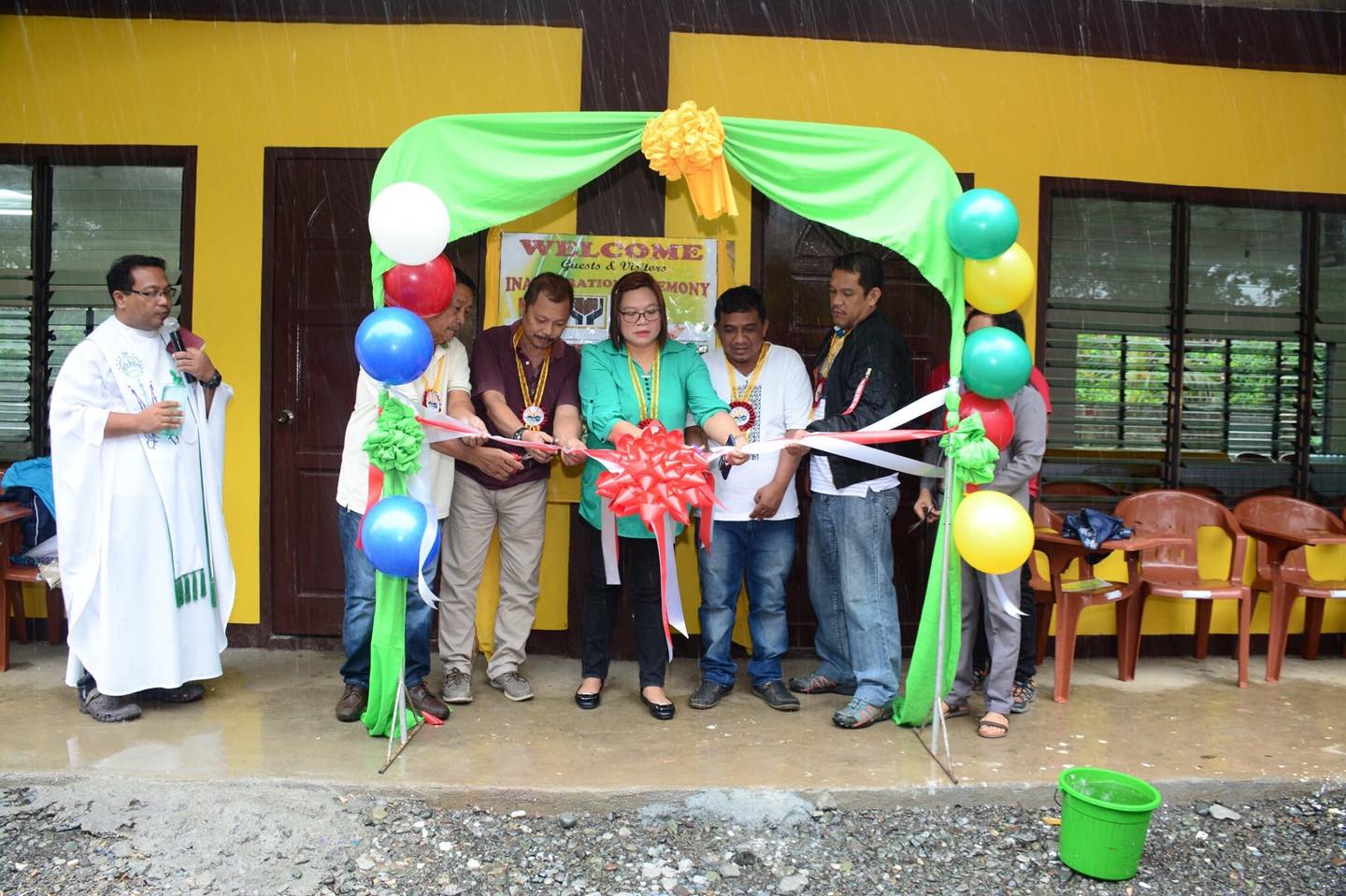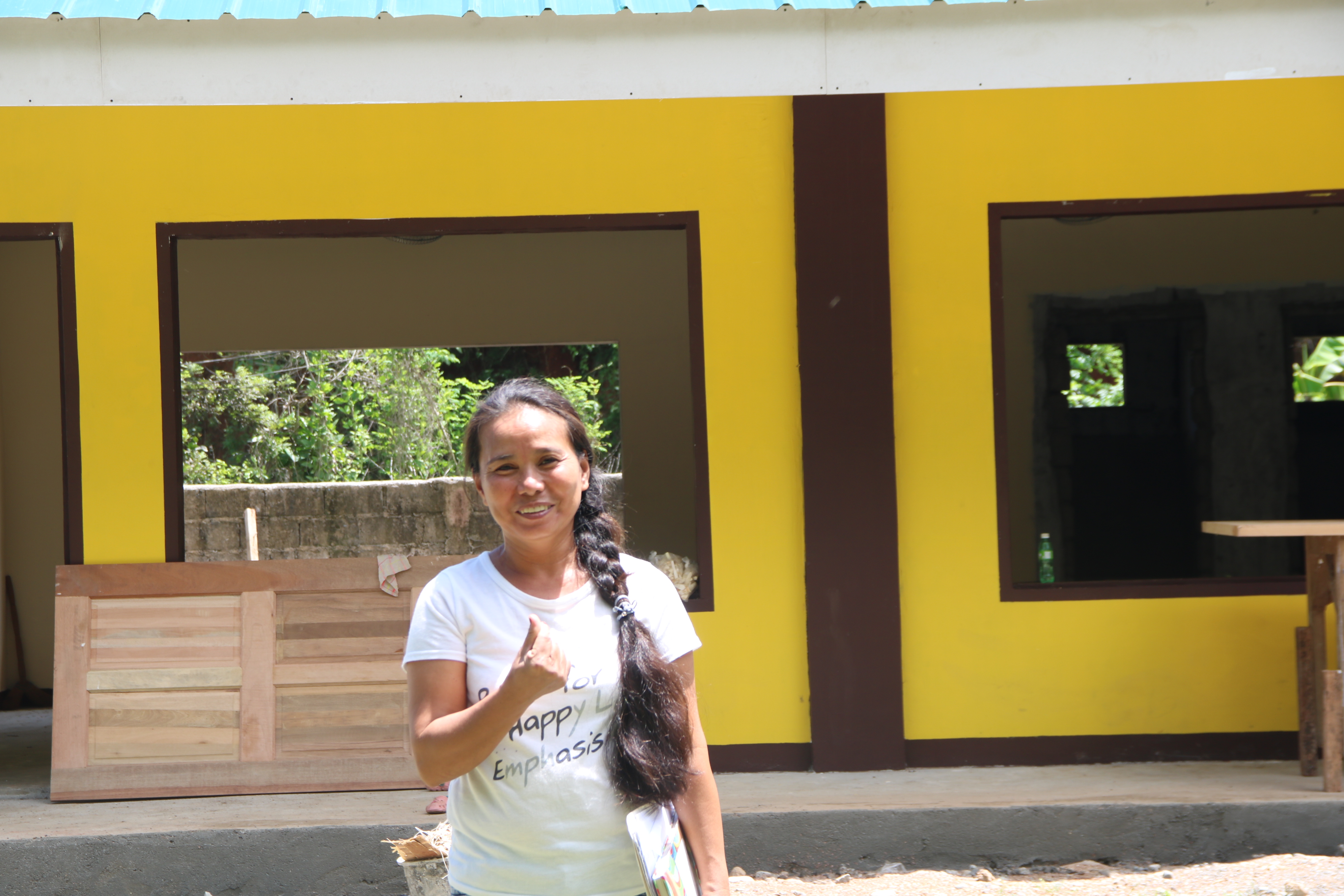
When Evelyn Urieta-Rivera, 57, received her new assignment as an elementary school principal three years ago, she was ecstatic. On her 33rd year of service as a public school teacher, Ma’am Evelyn would finally set foot at Sta. Lucia Elementary School, a quaint learning institution situated at the center of Sablayan, Occidental Mindoro. This small school, oozing with that childhood energy and innocence, was built atop her family’s ancestral land.
“Kasi itong land area nitong school na ito, sa family namin nanggaling as donation. Kaya sabi ko nga, sa lahat ng school, ito ang pinakamahal ko (My family donated this land for the construction of this school. So among all schools, this is the one dearest to me),” she added.
In 2016, when Ma’am Evelyn reported for her first day however, a heart-wrenching sight welcomed her. Entering the school from the main gate, she saw a Banaba tree, and under its shade sat 25 or more Grade 2 students intently listening to their teacher.
Three years have passed and the Banaba tree has gone transformations to at least give some level of comfort to its 7-year-old patrons. First, a roof was built, then wooden walls and thin cement flooring were added to give the pupils a sense of a normal classroom set-up, she said.
In 2019, the community of Brgy. Sta. Lucia finally found a solution to address their problem. This community used cooperation and volunteerism to pave the way to finally end the years of having school children learning outside the four corners of a classroom.

Classroom Under a Tree
With a total land area of 2,188 sq. kms, Sablayan is considered as the largest municipality in the Philippines. Located at the central part of Occidental Mindoro, it is famous for the Apo Reef Marine Natural Park, the second largest contiguous coral reef in the world next to Australia’s Great Barrier Reef.
Sablayan may be blessed with a one-of-a-kind natural wonder, but this laidback town hasn’t been exempted to one of the most pressing problems of the Philippine education system – the shortage of decent classrooms for students.
“Andun sa puno lang [sila nagkaklase]. Kapag umuulan, kawawa talaga ang mga bata, tumutulo syempre (They were conducting classes under a tree. When it rains, the roof starts to drip.),” said Ma’am Evelyn, pointing to the make-shift classroom which houses the Grade 2 pupils prior to the completion of the new building.
There were more or less 30 students sharing in the small space under the sturdy Banaba tree, she said. Its large trunk, moreover, looked like the classroom’s centrepiece – a wooden column planted in the center of the room. The children’s future had been literally depending on its branches for many years.
Imagine being a wide-eyed 7-year-old kid staying under a tree for eight hours, five times a week, rain or shine, learning the difference between a noun and a pronoun.
“Kasi kung malalaki ung ilalagay namin doon hindi sila kasya kaya maliliit ung nilagay namin doon (We couldn’t give the makeshift classroom to older students because they wouldn’t fit.),” said Ma’am Evelyn.
These Grade 2 pupils were the perfect tenants then, small enough to fit to the small space provided, yet big enough to take care of themselves when the rain drips from the clouds to the leaves and eventually find their way on their thin cement flooring.
Building School, Building Future

“Sobrang thankful kami na nagkaroon ng Kalahi, sobrang tuwang-tuwa ang mga teachers eh, kanina binisita nila ‘yan, ay meron ng ceiling fan, makakalipat na kami (We are very thankful for Kalahi, the teachers are very happy. We visited the new classroom earlier, there’s a ceiling fan already, we may be able to transfer soon),” said Ma’am Evelyn, pertaining to the 1 unit, 2 classroom building sub-project of the Kapit-Bisig Laban sa Kahirapan Comprehensive and Integrated Delivery of Social Services (Kalahi-CIDSS) program of the Department of Social Welfare and Development (DSWD).
To date, Kalahi-CIDSS has a total of 206 sub-projects in the province of Occidental Mindoro, 48 of which are in Sablayan. The poverty alleviation program which uses the Community-Driven Development (CDD) approach ensures that community members are in the heart of decision-making especially in identification, prioritization, establishment, and operationalization of the community sub-projects.
In July 2019, the makeshift classroom under the Banaba Tree finally ceased to shelter the Grade 2 students of Sta. Lucia Elementary School. Due to the combined efforts of the community, the school, and the barangay and the municipal local government unit, having classes under a tree is now a thing of the past.

“Madami pong naitulong [ang Kalahi] at malaki talaga. Ang pangunahing pangangailangan sa community, natutugunan po talaga. Tulad nitong classroom (Kalahi has helped us a lot. With Kalahi, we were able to address our most pressing concern, thus, this classroom),” said Juanita Jarabe, a community volunteer.
Juanita, and the rest of the 16 active community volunteers of Brgy. Sta Lucia, has ensured the smooth implementation of their new classroom worth a little over PHP 1.5 million. Complete with amenities such as tables and chairs, fans, and own restroom, the classroom was constructed from the combined budget of the stakeholders.
Kalahi-CIDSS total grant was at PHP 780,000, to which the municipal LGU gave a counterpart of PHP 500,000, the barangay LGU at PHP 250,000, and even the school has set aside PHP 36,000 from their budget.
For Ma’am Evelyn, the help of the community volunteers and the LGU officials has been vital for the realization of their dream to provide the students the facilities they deserved.
“Nagpapasalamat talaga kami kina Juanita, isa rin sa nagpursige na magkaroon talaga kami nito, sa mga konsehal, sa lahat na nag-counterpart (We are extremely grateful to Juanita and to other volunteers for their efforts, to the councillors as well, to everyone who provided counterpart),” she said.
Juanita, whose youngest child is currently enrolled at Sta. Lucia Elementary School, claimed that she finds volunteer work fulfilling.
“Sabi ko nga sa mga kasama ko masaya ako at nakakatulong ako at nalalaman ko yung mga pangunahing pangagailangan ninyo para magawan ng ng paraan para makahingi ng mga pondo katulad nyang school building (I told my co-volunteers that I am happy for extending a helping hand. At least we’ve identified the major concern and we were able to address it, asking for funds, if needed),” she said.
More than the infrastructure, the lessons imparted by the program has made the community volunteers more devoted to volunteering.
“’Yung mga katulad namin na ordinaryong mamamayan lang ay na-empower po, natuto kaming ipaglaban kung ano talaga ang aming mga karapatan dito sa community (Ordinary citizens, like me, were empowered. We’ve learned to fight for our rights),” Juanita added.
The product of the community’s collective effort is a safer, more conducive for learning classroom for the students – something that Ma’am Evelyn would be thankful for forever.
“Sabi ko nga ma-itransfer man ako bilang principal…masaya na ako kasi makikita ko ang mga bata na maayos ang kalagayan (If ever they have me transferred to other schools, I would still be happy knowing that I would be leaving the kids in a better condition),” Ma’am Evelyn added. ###
![]()


